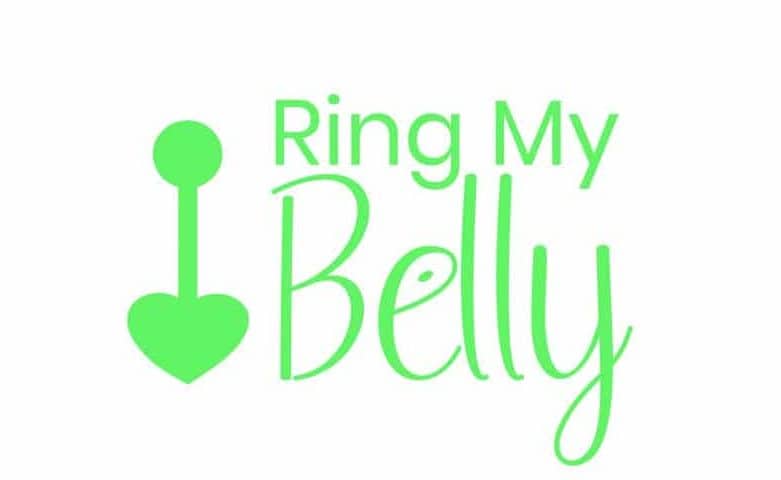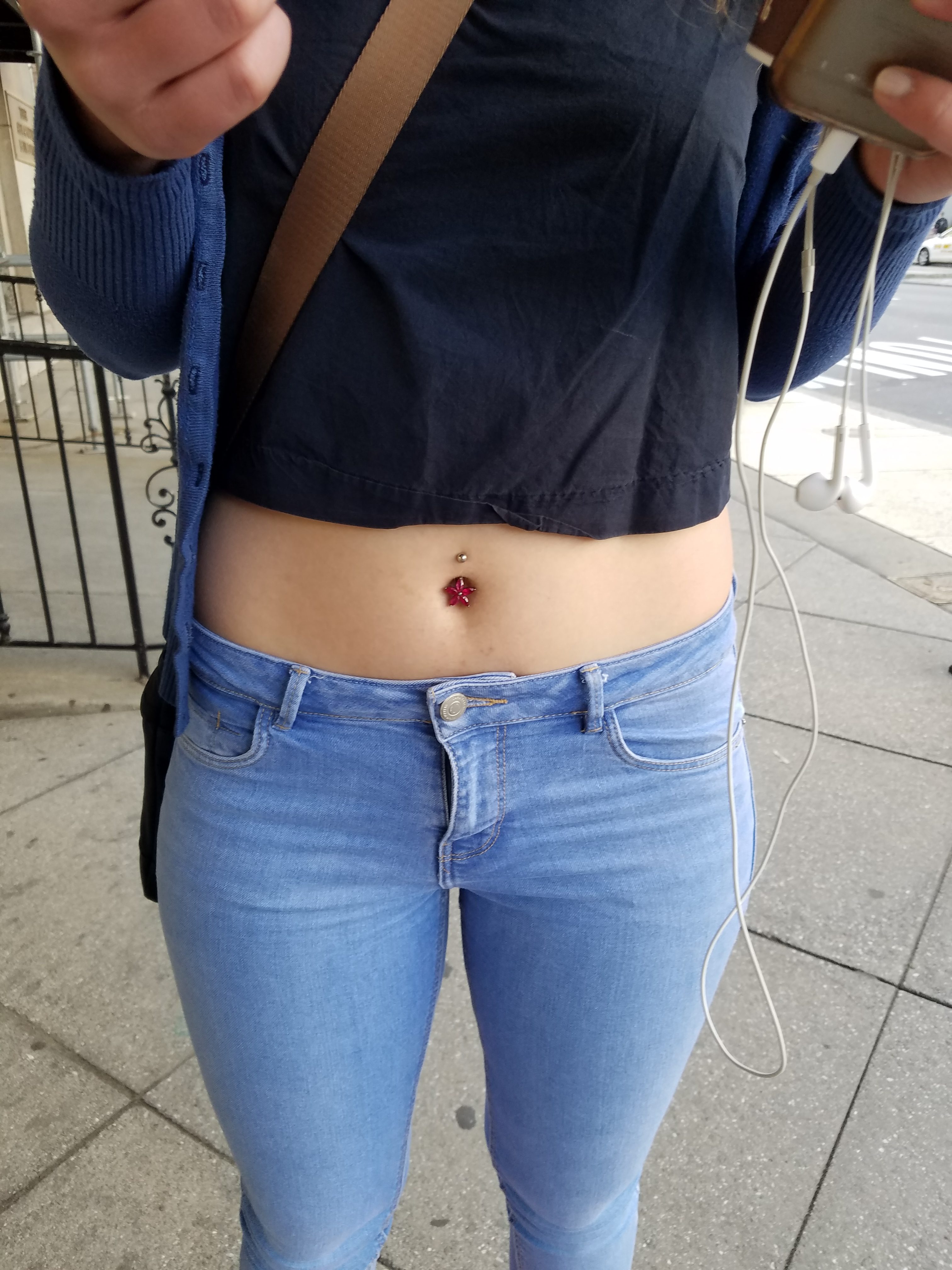How to take care of your belly piercing:
(Disclaimer: We are not professionals at piercing. We asked a couple of tattoo/piercing artists about what people with belly piercings should do after the procedure. A piercing is ultimately a wound. Take proper care, and check out the advice we gathered below.)
- The best way to care for your piercing is to clean it twice daily. If you are physically active, try to schedule your cleanings after you exercise. The easiest and most comfortable way to clean your piercing is either during or immediately following a hot shower. The hot water and steam will help soften your skin and loosen the crust at the base of your jewelry (making it easier to remove). While in the shower, wash your hands thoroughly with anti-bacterial soap. Some anti-bacterial soaps that contain fragrances can irritate your piercing or cause allergic reactions. Clean it twice a day during or after shower . Gently remove any crust from your jewelry with a disposable, one-use product such as a tissue or cotton.
- Another technique that you can perform is using sea salt. The reason why salt water is widely used for wound healing is that it helps kill bacteria around the piercing where the wound is. When these bacteria are killed, the wound site is cleaned and thus, the infection is inhibited, so that it will not spread into the other skin areas or getting worse.
First, fill a clean cup with water and add about 1/2 teaspoon of sea salt, stirring until it is dissolved. When ready, either place your belly along with the ring over the cup, then lie flat on your back, forming a sealant, or dip the piercing into the cup. If either of these techniques are not possible, soak a fresh tissue or cotton in the sea salt solution and firmly press it on your piercing. In order to promote effectiveness, the first sea salt soak should last a minimum 10 minutes. All additional soaks should last at least 5-10 minutes. Following the sea salt soak, pat your piercing and jewelry dry with a fresh disposable tissue or cotton.
- *Remember: A piercing is a wound. Consequently, you should expect tenderness, swelling, discoloration, and possibly bruising, bleeding, and itching. Also, a natural part of the process for healing any wound includes the secretion of a white-yellow fluid (containing dead cells and blood plasma). This fluid will dry and form crust on your jewelry.
- Never, ever, ever, ever touch your fresh piercing without first washing your hands with anti-bacterial soap. This is a great way to avoid infections even after your piercing is healed.
- Check the accessories (e.g., balls, gem-ends, dice, etc.) on your belly ring jewelry for tightness at least once a day. Make sure your hands are first cleaned with anti-bacterial soap. Checking your accessories is something that you should make habitual throughout the life of your piercing. Remember: tighten all threaded accessories by turning them to the right.
- If you feel that the normal secretion is turning into a thicker and darker discharge, please do not hesitate to contact your physician for more advanced treatment (Physician will most likely prescribe you antibiotics).
- Always wear loose and clean clothing around your new piercing. Tight or unclean clothing can irritate or infect the piercing, possibly causing it to migrate.
- Do not leave jewelry out of a piercing for too long. If you must remove your jewelry, either put in a retainer or replace it ASAP. For example, a tongue piercing can close-up in a matter of hours.
- Avoid going into a pool, hot tub, lake, etc when you just pierced your belly. These types of water can be unclean and may induce infection.
- Approximate healing period depends on the person but on average, it is usually between 6 months to a year.

